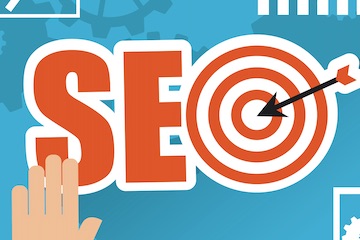Informational content such as buyers’ guides and how-to instructions enables you to lure shoppers to your site while they’re in research mode. There, they could complete an action that delivers immediate or future value to your business. Examples include signing up for a newsletter, requesting more info, or the ultimate goal: purchasing a product.
Ecommerce marketers tend to downplay the role of search engine optimization in shoppers’ purchase journeys. However, excellent, optimized content can benefit your business in the following six ways.
6 Benefits of Excellent Content
Traffic. Getting shoppers to your site is the first step to a lifetime customer. Organic search tends to drive from 15 to 75 percent of ecommerce sites’ traffic, depending on the strength of other marketing channels. And strong informational content can generate more traffic than a home page and top-level category pages.
Some of that traffic is likely from visitors unfamiliar with your brand and just entering the funnel. Others are shoppers who are aware of your company and want to learn more or consummate a purchase.
Increasing traffic often depends on reaching new audiences. That’s where excellent content is especially helpful. Align that content with your prospects’ interests — based on the keywords they use to express those interests — to pull them to your site.
Revenue. In the best-case scenario, shoppers click from your informational page to a product page and then convert. However, many do not take this step. It’s not why they searched in this instance. Regardless, if you don’t offer any paths to purchase on your informational content pages, the likelihood decreases that shoppers become customers.
Remarketing lists. Shoppers who visit your site create remarketing opportunities on other relevant sites across the web. We’ve all encountered remarketing ads from sites we’ve accessed. The ads seemingly follow us across the internet.
Organic search is an excellent way to build remarketing lists. Using those lists to display targeted ads to former searchers can convert a visit to a sale.
Say, for example, you sell women’s shoes. You have a page explaining how to clean leather shoes. Anyone who visits that page likely has a pair of leather shoes. She may be interested in buying more leather shoes. If you set that page to add visitors’ cookie IDs to a remarketing list, you can display targeted ads about leather shoes to those visitors to drive sales.
Email lists. Most merchants conduct some form of email marketing. Building an email list enables you to reach out to visitors with promotions, product announcements, company info, and more. All could drive prospects down the funnel — from awareness to purchase.
Link acquisition. Product detail and category pages aren’t likely to attract many backlinks. But quality informational content can. The challenge is making searchers and other visitors aware of your content to share or link to it. The more eyes you can get on that content, the more likely you will acquire high-value links that will boost your rankings (and brand awareness).
Brand leadership. Organic search is a good way to build the appearance of brand leadership. Many consumers assume that ranking well constitutes some sort of endorsement by the search engine, such as a “best company” designation. In reality, search engines rank pages based on relevance and authoritative signals as measured by algorithms.
Still, ranking well in organic search creatives a positive brand impression. When they click that page and discover your excellent information, searchers translate the positive brand impression into brand leadership, which is further down the funnel.
The result is searchers who are more receptive to your remarketing, email, and additional search results. Moreover, they will likely remember your company when they shop next.




